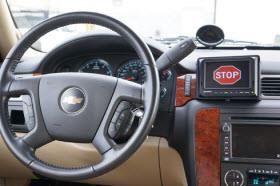It’s not uncommon for drivers around Pittsburgh and North Huntingdon to see other drivers run stop signs or fail to yield to oncoming traffic. And if you are being honest with yourself, you may be guilty of this a time or two as well. But what would happen if those traffic signs didn’t exist and were replaced with electronic signs and warnings via an in-dash screen? And the warnings would only be shown if another vehicle was present at an intersection?
This is exactly what researchers at the Virginia Tech Transportation Institute want to find out in an experiment that relies on technology rather than metal signs. The research is designed to not only provide safe traffic flow, but also save time and fuel for drivers and cut down on emissions caused by cars stopping or slowing for no reason—something any driver can appreciate.
“The idea is there would be no physical stop or yield signs on the side of the road, but they would be inside the vehicle,” Alexandria Noble, the Virginia Tech master’s student leading the research project, recently said. And it’s more than just an idea since Noble and VTTI conducted real-world trials with vehicles and drivers to test the concept.
VTTI conducted its own 17-week trial by eliminating road signs on its closed-course facility. Two tests involved dozens of participants aged 18 to 25 and also over 50 driving cars equipped with small dashboard screens. The screens were used to alert drivers to either stop or yield via a flashing display or to continue through the intersection unimpeded.
The technology could be beneficial since physical stop and yield signs are often not only overlooked or ignored but are also costly, noted VTTI. Signs have to be maintained and can be easily covered by trees, and they need to be replaced when damaged or stolen. The researchers also pointed out that signs such as “Bridge Freezes Before Road” aren’t needed most of the year and that adaptive in-car warnings would be better in such circumstances.

